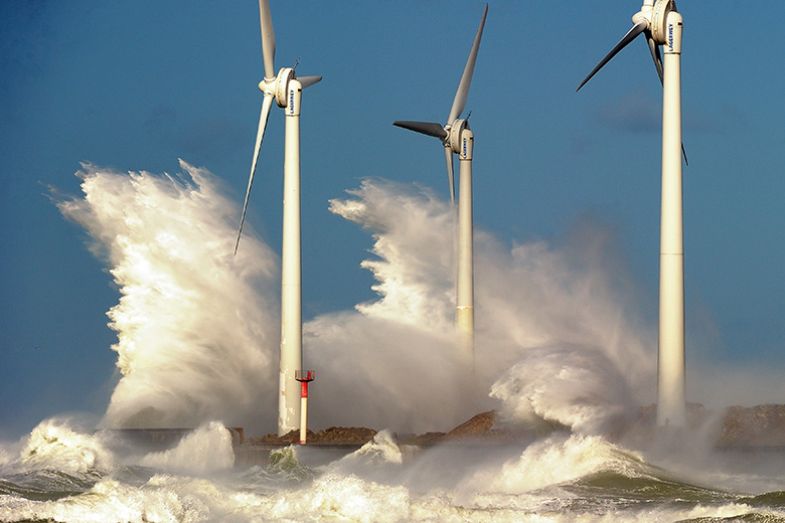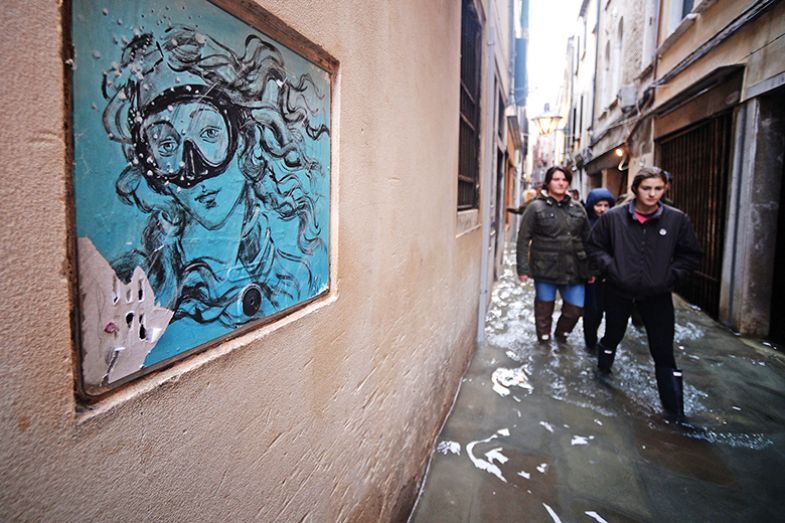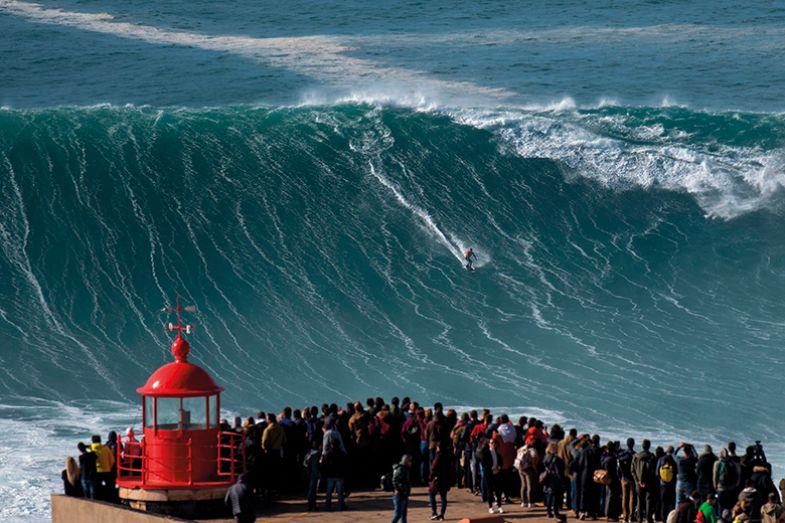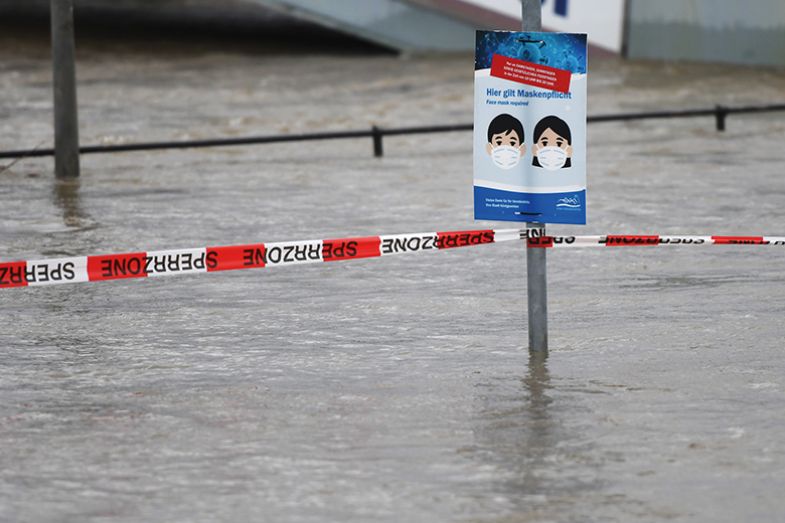At the end of 2020, governments across Europe started making announcements that, had it not been for a global pandemic, would have made academics jump for joy.
Spain’s minister of science (and former astronaut) Pedro Duque unveiled a budget that will this year see research spending in the country skyrocket by more than 80 per cent and university spending by more than 70 per cent. This will be “the largest direct investment in research, development and innovation in absolute terms in [Spain’s] history”, he tweeted.
French researchers, meanwhile, were told that the budget of the country’s National Research Agency (ANR) would more than triple by 2023. France is embarking on a “historic mobilisation of our research” in an effort “unprecedented since 1945”, the government announced.
In the Netherlands, €20 billion (£17.5 billion) has been set aside to turbocharge education, research and infrastructure plans over the next five years. And Sweden has also announced a 10 per cent research and innovation budget increase by 2024.
What is going on?
Despite the catastrophic recession brought about by repeated lockdowns to control the Covid-19 pandemic, the continent is set to be swimming in public money this year, the fruit of national governments’ borrowing at ultra-cheap rates and an unprecedented €672.5 billion stimulus package of loans and grants jointly financed by the European Union to help the bloc emerge from the pandemic “greener, more digital, more resilient”.
The stimulus funding comes in the context of previous concern that research was not being sufficiently prioritised by the EU. After years of wrangling and interminable lobbying by universities, the budget of the EU’s next seven-year research and innovation programme, Horizon Europe, disappointed many when it was announced last summer. However, it was then topped up by another €10 billion, including €5.4 billion from the EU’s NextGenerationEU fund, intended “to boost our recovery and make the EU more resilient for the future”. The total budget of €95.5 billion now represents a 30 per cent increase on the previous framework programme, Horizon 2020. However, even a small slice of the €672.5 Recovery and Resilience Facility, as it is snappily called, would mark another significant and welcome cash injection for European universities.
The largesse marks a sharp break with the politics of austerity that followed the global financial crisis of 2008. Cutbacks left many universities – notably those in Italy, Spain, Hungary, Romania, Estonia, Lithuania, the Czech Republic and the Republic of Ireland – bereft of public cash. Irish universities, for instance, now have fewer academics than they did in 2008, and their budgets are still down by more than a fifth, according to the latest figures from the European University Association.
Currently, Brussels is scrutinising member states’ plans for how they will spend the Recovery and Resilience Facility money, and these blueprints shine a light on what national governments currently value – or don’t – about universities and research institutes.
Research and education should be “one of the main beneficiaries” of the EU’s stimulus package, says Anca Calugaru, business director at Brussels-based EU funding consultancy Schuman Associates, who has been poring over member states’ plans. “It’s a very good context for the sector.” If that proves to be true, European universities could stand on the cusp of a roaring ’20s of expanding budgets as politicians and society look to them to help the continent innovate its way out of recession and confront the crises that the 21st century promises to keep throwing up amid the rise of automation and the degradation of the environment.

One of the enduring questions about research spending in the EU has been the extent to which it does indeed lead on to commercial innovation and economic growth. This is why the main difference between Horizon Europe and Horizon 2020 is the new programme’s increased emphasis on research translation; the new €10 billion European Innovation Council, for instance, aims to “turn Europe’s scientific discoveries into businesses that can scale up faster”.
Some of the countries that have already announced how they intend to spend their shares of the Recovery and Resilience Facility have also recognised the innovation gap.
France was one of the first out of the blocks, launching in September a €100 billion plan called “France Relance” – “France Relaunch” – 40 per cent of which is funded by the EU. The ANR will be showered with money: this year, its budget will increase by €400 million, close to double the 2020 figure, and by 2023, its resources will have more than tripled. The aim is to end years of dysfunctionally low grant success rates.
“This was not expected at all. It’s a lot of money,” says Patrick Lévy, head of the European committee at France’s Conference of University Presidents. It is a “very different” response from the lacklustre increases that followed the 2008 recession, he adds.
The stimulus is particularly welcome in France given the spotlight cast by its failure to create and manufacture a Covid-19 vaccine on the general health – or otherwise – of its science base. Politicians across the spectrum have bewailed the country’s “humiliation” after the vaccine candidate of flagship pharmaceutical group Sanofi flopped. Paris’ historic Pasteur Institute also announced at the end of January that it was scrapping its most promising prospect.
But Lévy, a respiratory specialist who has tracked the explosion of coronavirus literature since last March, notes that the problem does not lie with basic science. “Actually, basic research [into the coronavirus] was quite good everywhere, and even in France,” he says. “What was missing was the transfer to industry, and the ability of industry to make either drugs or a vaccine.”
Still, the vaccine setbacks are, more generally, a “sign of the decline of the country”, according to François Bayrou, France’s recently appointed commissioner for long-term planning. And, to illustrate his point, he told a radio station in late January that it was “not acceptable” for the nation’s best researchers to be “sucked up by the American system”.
Accordingly, France Relance sets out to preserve the country’s “technological sovereignty” – a buzz phrase now commonly used in Brussels (and Berlin) – by strengthening scientific capacity in key areas such as health and industry. It will pour more than €3 billion over three years into research sites and labs, with biomedical research being a particular priority. Another €2.4 billion will help “emerging technologies” developed in labs get off the ground.
Similar anxieties about domestic scientific capacity have kept policymakers up at night across the bloc, according to Simon Roy, a policy analyst at the Paris-based Organisation for Economic Cooperation and Development. Even before vaccines began emerging from outside the bloc, European ministers were concerned that so much of the required medical equipment to treat Covid-19 was made in China. “There’s definitely been a debate in France – as you would expect from France – but it’s not uniquely French…about economic and scientific independence,” he says.

In the Netherlands, universities are also hoping to drink from the gushing stream of euros turned on to address the concern. A €20 billion “national growth fund”, bankrolled by national borrowing, will be spent over the next five years; academics certainly won’t be the only group to benefit, but they should have a decent shot at winning support for their proposals.
With the production of Dutch natural gas being phased out, “the only raw material the Netherlands still has is knowledge, its people”, says Robert-Jan Smits, president of Eindhoven University of Technology and a member of the expert committee that will decide which projects get funded. Although launched last September, the roots of the fund go back more than a year to a government policy paper calling for a radical upgrade to the country’s education system and ability to come up with new technologies.
“It’s all about knowledge – so universities are by definition involved,” Smits says. This all marks a major change from when the Dutch were “masters of austerity” after 2008, he adds.
But not all the funding should be spent on research translation and commercialisation, he believes. Frontier, curiosity-driven research should also benefit because the fund is supposed to have a long-term horizon. He also reassures social scientists and humanities scholars that they will be needed to help ensure public acceptance of far-reaching economic changes, noting that “you can talk about all the new economic growth models you want, but if the society is not accepting it, then you can’t roll it out”.
However, successful projects need to prove that they will raise Dutch GDP: a criterion that Bas Jacobs, a professor of public economics at Erasmus University Rotterdam, thinks is too narrow. “Projects with sufficient social returns, but [that] do not raise GDP, don’t get funding, and I think this is especially the case with environmental projects,” he warns. The committee deciding who gets a slice of the fund includes academics like Smits, but it is also stuffed with former corporate chief executives.
Bas also worries that the fund’s five-year time frame is much too short for a proper public investment strategy. “My fear is that short-termism will drive the applications to these funds,” he says.
Short-termism is also a worry in Portugal – but, in this case, the short-termism of not increasing investment at all. So far, there is no sign of a cash injection for the country’s researchers, long starved of funding, says Pedro Teixeira, director of the country’s Centre of Research on Higher Education Policy and an adviser to Portugal’s president.
As in the Netherlands, policymakers in Portugal have been trying to fundamentally rethink how the country will earn its way over the next generation. However, while a government-commissioned report last year unveiled a plan that was heavy on science, the proposal that the Portuguese government has actually sent to Brussels is much lighter on research and innovation. Instead, it grasps at the low-hanging fruit of ready-to-implement infrastructure projects, Teixeria says, such as improving the metro system in Porto and Lisbon. “They try to target things that could be implemented quite quickly,” he says.

But universities, too, are benefiting from infrastructure spending. A condition of the EU stimulus funding is that 37 per cent of it needs to be spent on green causes, and this is leading to what the Brussels consultant Calugaru calls a “renovation wave” across the European estate. “Many countries decided to invest in energy efficiency in public buildings, including in universities,” she says. France, for example, is going to spend €1.3 billion on making university campuses and research facilities more energy efficient.
But university leaders in a number of countries, including Denmark and Austria, remain unsure exactly how they will spend the EU’s money. And there will be an ongoing “ping pong” between national capitals and Brussels well into the spring as the commission scrutinises how member states plan to spend their share, explains Calugaru.
The biggest winner in euro terms will be Italy, which is set to receive €65.5 billion in grants. But in the wake of political turmoil at the top of its government – prime minister Giuseppe Conte resigned in late January as the country’s ruling coalition fell apart, leading to a government of national unity under former European Central Bank president Mario Draghi – Italian rectors remain unclear exactly how much their sector will get. Still, an early January draft of Italy’s EU submission – which takes into account several other sources of funds as well – proposed an €11 billion injection into a programme called “From Research to Business”, which would fund everything from basic research right through to getting new technologies to market.
Meanwhile, Poland has a wish list of research infrastructure projects, including synchrotrons and biotechnology labs, explains Andrzej Kurkiewicz, deputy director of Poland’s Department of Innovation and Development. He anticipates that the country will end up spending between €1 billion and €2 billion on such facilities, but this now turns on negotiations with Brussels that could drag on for months.
Unlike the EU’s longstanding cohesion funds, which generally flow from richer states to build up the capacities of poorer ones in the south and east, the pandemic stimulus will also rain euros on the bloc’s wealthiest members. Germany is set to receive almost €24 billion and will spend the largest chunk of this on cutting carbon emissions and creating new clean technologies, particularly hydrogen. But it is not yet clear how much will flow to academics. Research is repeatedly mentioned in the country's plan and is integral to it – but universities and students are rarely mentioned, apart from in connection with plans to retrain academics and students in data skills. The expectation from one university president is that most of the cash will go to Germany’s extensive network of research institutes, rather than its universities.

Indeed, there is a general sense across Europe that while lab heads may be rubbing their hands at the prospect of greater support for research, university managers hoping for more money for teaching may be disappointed.
“Lifelong learning is definitely in almost every recovery plan that I have seen,” explains Calugaru. “That’s a big focus, especially because of the crisis.” But universities tend not to be taking the lead in plans to reskill Europe’s battered labour force, she adds; instead, trade unions and chambers of commerce typically fulfil that role. “Universities have lots of programmes for their own students and teaching staff, but they are not in the driving seat [regarding the wider workforce],” Calugaru says.
Nor are extra university places eligible for EU funding, she adds, as “the EU doesn’t want to fund things that [countries] would normally do on [their] own”. France, for instance, is adding an extra 20,000 places this year, focusing on health and professional degrees, but the funds for that will be drawn from the nationally funded segment of its stimulus package.
In Portugal, meanwhile, petitions and lobbying by prominent scientists have secured presidential backing for at least some extra research money, says Teixeira. But university bosses have failed to successfully push for more teaching capacity. “There was no strong argument saying we need to retrain more people,” he laments.
It could be that universities emerge from the crisis with a rather lopsided profile: research budgets swollen – in STEM fields at least – and scientists hailed as pandemic-beating heroes, but precious little new money to teach the millions of youngsters and adults trying to pick their way through the wreckage of the labour market.
In fairness to continental Europe, core university budgets have held stable during the year of lockdowns because, unlike in the anglophone world, institutions are not particularly dependent on tuition fees or international students flying across the world. “Public spending hasn’t yet been hit, and governments just seem to be borrowing,” says the OECD’s Roy. And whatever the omissions around teaching funding, the contrast between governments’ responses to the 2008 crash and the Covid-19 pandemic is stark. Since, as Roy puts it, universities have “demonstrably” shown their value by educating health professionals, developing vaccines, and even providing experts to flank politicians at press conferences, the public and political discourse this time around is that “investing in science and higher education is important”.
After all, when science has just ridden so visibly to humanity’s rescue, “politically it doesn’t look great to be cutting research and higher education budgets”.
POSTSCRIPT:
Print headline: Riding Europe’s post-Covid spending wave
Register to continue
Why register?
- Registration is free and only takes a moment
- Once registered, you can read 3 articles a month
- Sign up for our newsletter
Subscribe
Or subscribe for unlimited access to:
- Unlimited access to news, views, insights & reviews
- Digital editions
- Digital access to THE’s university and college rankings analysis
Already registered or a current subscriber? Login








